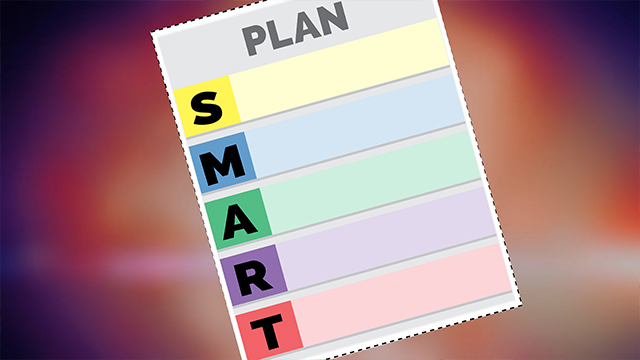"Get SMART with Summer Goals"
Before saying goodbye to your students at the end of the year, help them make the most of summer break with this lesson plan on goal setting. Students will use Flocab’s SMART goals video as a jumping off point to craft goals for the summer that are specific, measurable, actionable, realistic and timely. Working in pairs, students will interview each other about their goals and assess whether they fulfill the SMART criteria.

Students will:
- explain characteristics that make a goal specific, measurable, actionable, realistic and timely;
- produce a written summer goal and revise based on peer feedback;
- analyze and provide feedback to peers on whether goals meet the SMART criteria.
Standards
- CCSS.ELA-Literacy.SL.5.1.C
Pose and respond to specific questions by making comments that contribute to the discussion and elaborate on the remarks of others.
- CCSS.ELA-Literacy.W.5.4
Produce clear and coherent writing in which the development and organization are appropriate to task, purpose, and audience.
- CCSS.ELA-Literacy.W.5.5
With guidance and support from peers and adults, develop and strengthen writing as needed by planning, revising, editing, rewriting, or trying a new approach.
Materials
Products Created
- Completed worksheet with a goal for the summer and descriptions of how it meets the SMART criteria
Time
- One class period
Sequence
- Watch the Flocabulary Goal Setting video. As a class, review what it means for goals to be specific, measurable, actionable, realistic and timely.
- Tell students that they are now going to help each other craft a SMART goal for summer break. Divide students into pairs and pass out the Summer Goals worksheet. Students will first list areas in which they might want to set goals, like school, sports or their personal life, and circle one to focus on. Then, to start narrowing down specifically what they’d like to accomplish over the summer, students will swap worksheets and interview their partners. They’ll be prompted to ask each other questions like “What do you want to achieve?” “Why do you want to achieve it?” “What steps will you have to take to achieve your goal?” “What obstacles might stand in the way of achieving your goal?” Through the interview process, one or both partners may find that the goal they’ve chosen for themselves doesn’t work. Encourage them to start again with another choice so that they are working with a goal that makes sense for them and that they feel invested in.
- Have students take their papers back and individually write down a goal for the summer using their responses to Part 1 as a guide.
- Tell students that they’re now going to make sure their goals fulfill the SMART criteria from the video. Have them fill out page 2 of the worksheet, describing how their goals are specific, measurable, actionable, realistic and timely.
- Have the pairs come back together and talk through their answers to part 2. Students will explain to their partners how their goals fulfill the SMART criteria. If students’ goals don’t meet one or more of the criteria, they should brainstorm ways to adjust them with their partners and revise their goals.
Wrap Up/Extensions
- Have students brainstorm ways to keep themselves accountable over the summer and ensure that they work toward achieving their goals. Will they set a daily or weekly alarm to remind them? Reward themselves with something they like to do when they complete a step toward achieving their goals?
- To give students practice balancing their goals with other commitments they may have over the summer, have them create a schedule for a sample day. Encourage them to list all the things they might have to do on a given day over the summer and the amount of time they’ll need, prioritize the list and fill in a schedule with what they’ll do each hour.
Guided Reflection
- “I used to think _______, and now I think _______.”
- “One thing I learned is __________, and one question I still have is _________.”